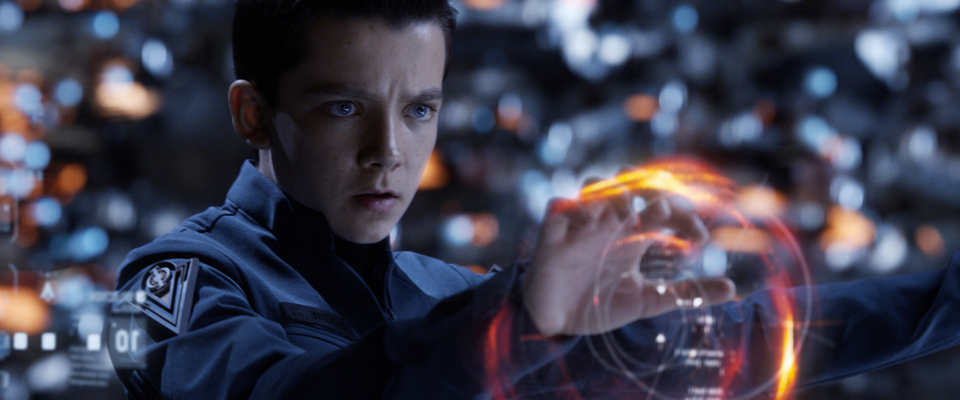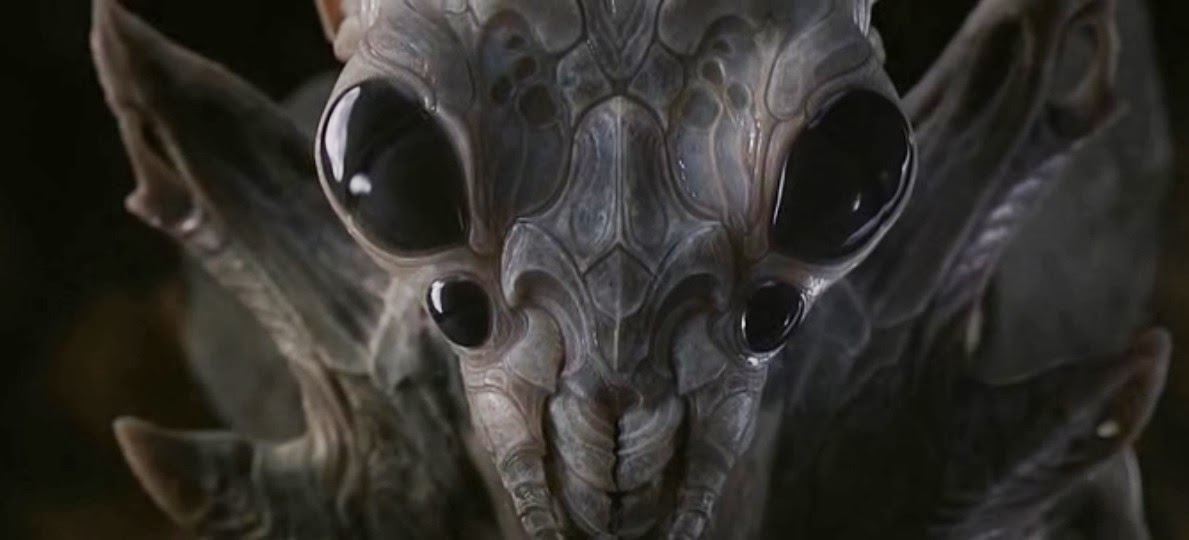Ender’s Game (2013)
It sparks much fantasy when you’re 12 or so, or maybe two or three or six times that, to watch a movie that puts a kid in charge of something – and not just as a mere hallway monitor or recess captain, but as a worldwide military commander whose life-or-death task is to save all of Planet Earth from destruction by alien invaders.

That’s the premise of this film. A half-century ago the Formics, large ant-like space aliens, killed tens of millions of people while trying to take over Earth. They were beaten only when a heroic pilot killed their queen by crashing his jet fighter into their mother ship. Since then the International Military, expecting a return visit from the Formics, has decided Earth’s best hope for survival is to recruit the smartest kids from around the globe, all of them raised on war games, and to select and train the very best of them as military leaders who will take charge if the Formics attack again.

Enter Ender Wiggin, the title character. Ender (Asa Butterfield), 12, is a third child in a two-child society; his parents got permission to have him, and he wonders about his purpose in life. Ender is the target of bullying at the military training center – but Colonel Graff (Harrison Ford), the superintendent, has spotted huge strategic and tactical potential in him. Ender, however, has a conscience and a sensitive side, and after he vanquishes a bully with overkill he leaves the program and goes home. Col. Graff persuades him to return and takes him up to an orbiting Battle School to compete for promotion to Command School.
When Ender tries a seemingly unsolvable telepathic Mind Game, he beats it by thinking outside the box, a victory that Col. Graff pronounces “perfect.” He returns to the Game to challenge the Formic queen, but unexpectedly he sees his sweet sister Valentine (Abigail Breslin) appear there.
Ender meets fellow cadet Petra (Hailee Steinfeld), who instructs him in target practice and martial arts. They win a mock battle in which Ender excels. Before long, they win another game. Ender soon has a loyal team that follows his leadership.
Destiny looms when a “Formic detection perimeter” indicates there will be an encounter in 28 days. But Ender leaves the program again after an accident in which he seriously injures a bully who attacked him. In a confrontation, Col. Graff, who has been toughening him up, says, “I’m not the enemy” and Ender replies, “I’m not so sure.” Back on Earth, Graff gets Ender’s sister to talk him into rejoining; she tells her brother, “If you don’t try, we’ll all be lost.”
Col. Graff and Ender return, and this time they rocket to an advance base near the Formics’ planet, where Ender’s team greets them. Ender is told that the Formics want Earth’s water. They have a population growth rate that’s unsustainable – “like us.” They need to do something “before they breed themselves into extinction.” Go figure.
Graff tells Ender that if he wins a simulated war game the next day, he will become commander of the International Fleet. The Formics’ force approaches but puzzlingly does not attack. Ender and his team do win, sacrificing thousands of their own personnel in order to deliver a mega-shot that causes a wave of flame to sweep over the entire planet.
Ender and his team are jubilant – until…SPOILER ALERT: …they learn that the “simulation” was for real. Ender has just sent thousands of members of his own fleet to their death, and the Formics have been wiped out. Under the theory that “if we destroy the planet we destroy the [new] queen,” Col. Graff has deceived Ender and his team in order to engineer a preemptive strike against the Formics. Earlier, Graff had told a subordinate that they could “debate morality later,” and he’d asked her, “What does it matter what we do if there’s nothing left [of Earth]?”
Ender, angry and distraught, exclaims, “I killed an entire species. I will bear the shame of this genocide forever.” Col. Graff answers, “We won! That’s all that matters.” Ender replies, “No – the way we win matters.” They then sedate Ender.
SPOILER ALERT: This film’s pro-life facets figure in the denouement. Recalling the Mind Game he’d played earlier, Ender realizes that the Formic queen was trying to communicate with him, not attack. He goes out onto the planet’s surface and finds her dying beside an egg in which an unhatched new queen is growing. In quasi-mind-meld mode he apologizes for what he did, she forgives him – and he promises to preserve the egg so her species can regenerate somewhere else. Soon, promoted to admiral and given his own ship, he blasts off with his “precious cargo” in search of a suitable new planet.
Col. Graff’s “debate morality later” character bears a certain resemblance to England’s Sir Arthur “Bomber” Harris (1892-1984), who carried out the intentional bombing of Germany’s civilian populations, which killed hundreds of thousands. Harris said, “I do not personally regard the whole of the remaining cities of Germany as worth the bones of one British Grenadier.” Harris, like Ender, was a third child; a biographer said his parents lacked the funds to send him to the prestigious schools his brothers had attended.
Ender’s Game calls to mind the 1984 film The Last Starfighter, in which aliens recruit an American teen arcade game expert to save a distant planet. It also somewhat echoes WarGames, from 1983, in which a young computer whiz hacks into a military system and inadvertently nearly starts a nuclear war.
This film is rated PG-13 by the MPAA for some violence, sci-fi action and thematic material. Gavin Hood directed the movie and wrote the screenplay, with a writing credit to Orson Scott Card, author of the 1985 novel of the same title. Cinematography by Donald McAlpine and music by Steve Jablonsky.
— Dan Engler












